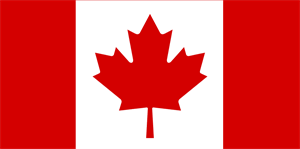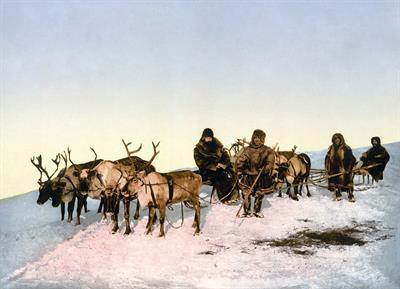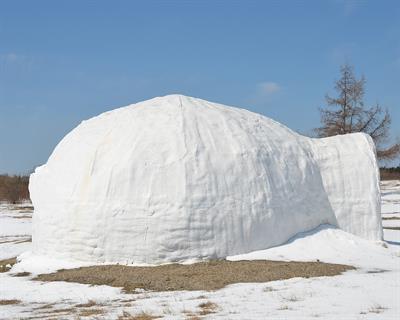OTRĀ SEMESTRA NOSLĒGUMA TESTI
Read the information, listen and learn or repeat words and expressions about Canada.
(Lasi, klausies un iemācies vai atkārto dažus vārdus par Kanādu!)

- Canada
Canada is a country in the northern part of North America. Its ten provinces and three territories extend from the Atlantic to the Pacific and northward into the Arctic Ocean, covering 9.98 million square kilometres, making it the world's second-largest country by total area after Russia. Its southern border with the United States, stretching 8,891 kilometres, is the world's longest land border between two countries. Canada's capital is Ottawa. Canada is a sparsely populated country, most of the people live close to the US-Canada border where the main urban areas such as Vancouver, Montreal, Quebec are.
Various indigenous peoples inhabited what is now Canada for thousands of years before European colonization. Beginning in the 16th century, British and French expeditions explored and later settled along the Atlantic coast. Since then both French and English kings have ruled over the country. Canada gained independence from Britain in 1867. Today, Queen Elizabeth II of England is also the Queen of Canada and the head of state.
The name Canada comes from the word ‘kanata’ which means ‘settlement’ or ‘village’ in the language of the indigenous.
Canada — [ˈkæn.ə.də] — Kanāda
- The flag of Canada
The flag of Canada, often referred to as the Canadian flag, or unofficially as the Maple Leaf, is the national flag of Canada which consists of a red field with a white square at its centre, in the middle of which is featured a stylized, red, 11-pointed maple leaf. It is the first flag approved by the Parliament of Canada for use as the country's national flag.
In 1964, Prime Minister formed a committee to resolve the ongoing issue of the lack of an official Canadian flag. Out of three choices, the maple leaf design by George Stanley was selected. The flag made its first official appearance on February 15, 1965. The date is now celebrated annually as National Flag of Canada Day.

the flag of Canada — [ˌflæɡ ˌəvˈkæn.ə.də] — Kanādas karogs
the Canadian flag — [kəˈneɪ.di.ən ˌflæɡ] — Kanādiešu karogs
the Maple Leaf — [ˈmeɪ.pəlˌliːf] — Kļavas Lapa
- Ottawa
Ottawa is the capital city of Canada. It stands on the south bank of the Ottawa River. Founded in 1826 as Bytown, and incorporated as Ottawa in 1855, the city has evolved into the political centre of Canada. Étienne Brûlé, widely regarded as the first European to travel up the Ottawa River, passed by Ottawa in 1610 on his way to the Great Lakes. Philemon Wright, a New Englander, created the first European settlement in the area on 7 March 1800 on the north side of the river, across from the present-day city of Ottawa in Hull.

Ottawa — [ˈɒtəwə] — Otava
- Languages
Canada has two official languages: English (Canadian English) and French. Almost half of the population can speak both languages. The majority of Canadians speak English as first language, but French is the main language in the Quebec province. In Quebec also almost half of the population is bilingual, which means that they are able to speak both languages fluently.
Canadian English — [kəˈneɪ.di.ən ˈɪŋ.ɡlɪʃ] — kanādiešu angļu valoda
French — [frentʃ] — franču valoda
- People
The Canadian people are called Canadians. Most of the Canadian families have roots in England and France, as during the French and British colonised the country and thus many families from 'the old world' immigrated into Canada.
Canadian — [kəˈneɪ.di.ən] — kanādieši, kanādietis, kanādiete
- Inuit
Among the aboriginal people in Canada are the Métis, the First Nations People and the Inuit. The indigenous people in northern Canada are called 'Inuit'. Inuit people, which were called 'eskimos' previously but this name is not acceptable and pejorative. Today, only 5 in 100 Canadians refer to themselves as 'Inuk' (one of the Inuit people).
The Inuit lived, during the winter period while they hunting and fishing, in the houses made of snow called igloos. Today they live in modern houses but still build igloos, especially when hunting. The Inuit children go to the community's schools, but there are no universities in the North. So if the children decide to go on studying, they have to leave their communities and move to university cities. In the Inuit language, writing text was only begun in the 19th century before they mainly used symbols for writing.

Inuit (plural) — [ˈɪn.ju.ɪt] — inuīti
Inuk (singular) — [ˈɪn.ju.k] — inuks

igloo — [ˈɪɡ.luː] — iglu, sniega būda
Atsauce:
https://www.canada.ca/en.html
https://www.kids-world-travel-guide.com/canada-facts-for-kids.html